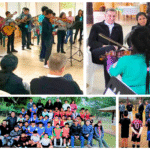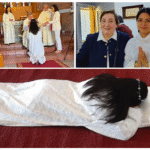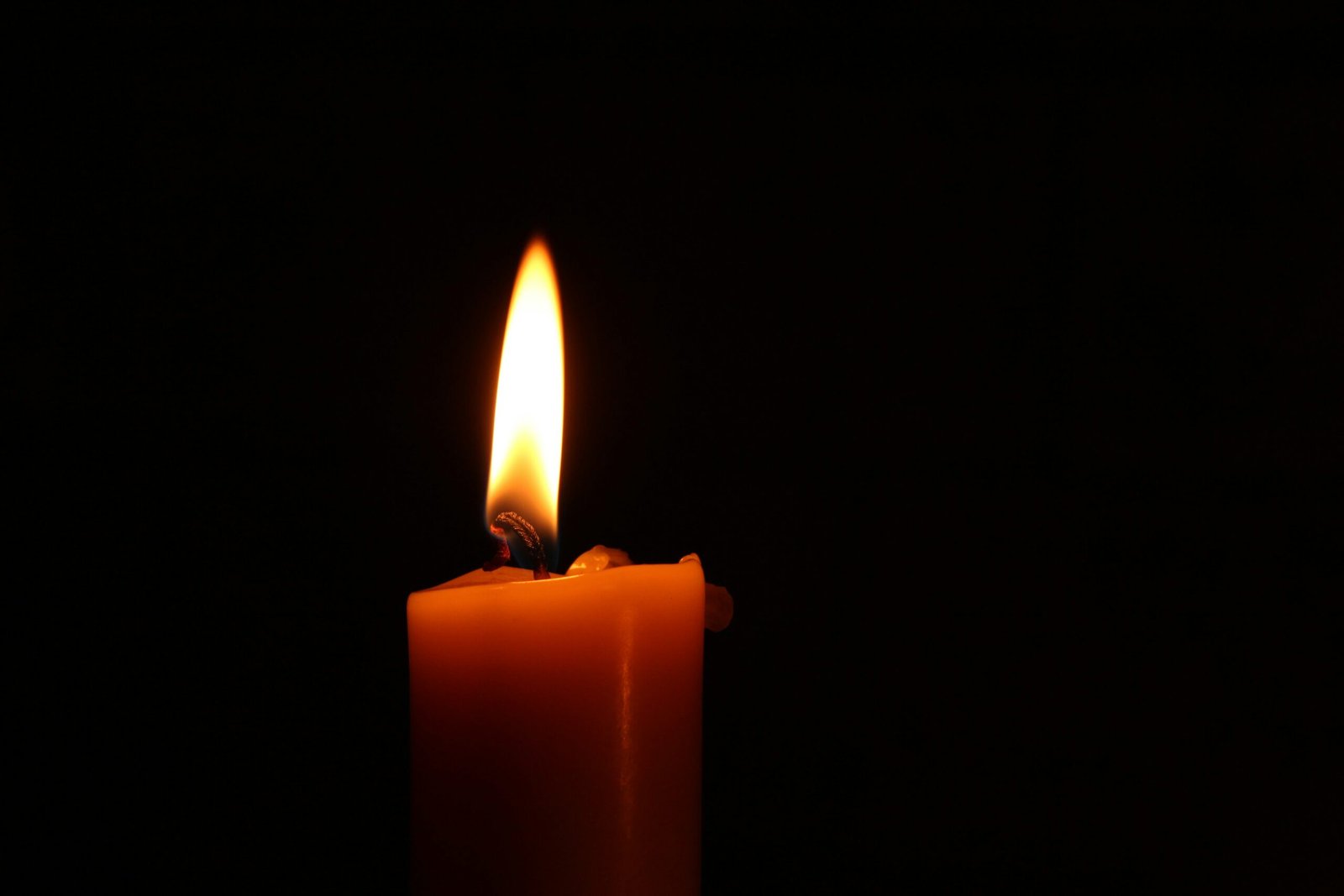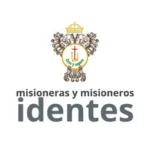By F. Luis Casasús, General Superior of idente missionaries
Commentary on the Sunday Gospel of 18-6-2017, Corpus Christi (Book of Deuteronomy 8:2-3.14b-16a; 1Corinthians 10:16-17; Saint John 6:51-58)
In business, family life, or in diplomacy, partners use a communication process in which they exchange signs of understanding. The communication is, therefore, the engine of collaboration. It consists of an exchange of information between participants.
There are many different kinds of signs and signals, such as traffic signals, referees’ or coaches’ signals, signals between friends or between spouses, which they use to convey loving messages to each other. The Eucharist is, among other things, a clear and powerful sign:
Christian life is expressed in the fulfilling of the greatest commandment, that is to say, in the love of God and neighbor, and this love finds its source in the blessed Sacrament, which is commonly called the sacrament of love. The Eucharist signifies this charity, and therefore recalls it, makes it present and at the same time brings it about (John Paul II; Dominicae Cenae).
In the 1980’s, in Tenerife, a group of sisters and brothers worked with Idente Youth in several environments: university, high school…and also male teenagers in risk. Once, one of these young men who lived in a Center for Custody of Juveniles was isolated in his room for several days, after having attacked and injured a staff member with a fork during dinner.
We had the opportunity to explain it to our father Founder. Immediately he took from his pocket his golden pen and said: Tomorrow you will give it to him in my name. We asked for permission to visit the young man in his room and we did as he told us. When he received the gift, he collapsed and wept. He sobbed: This is the first gift I receive in my life.
I do not believe that the value of the pen was important, but two things are true: it was a really inspired decision and the sign had a profound effect on the life of the teenager.
A gift is a sign of love. This is what makes it meaningful and precious far beyond the commercial value of the object that is offered. The greater the love, the more precious the gift, even when the object chosen to express it may not be proportioned to the intensity of the love it is meant to signify.
Ultimately, it should signify the donor’s desire to give himself/herself totally to the recipient, in love. This is why all gifts fall short of really being what they are meant to express. All, except the Eucharist. The Eucharist is precisely what it is meant to be: Christ’s total gift of self to us in the fullness of his divinity and humanity, in spite of the poverty of the material elements used to convey it.
In Information Theory jargon, it is said that the success of the communication depends on the degree that a shared norm system is established. Then, a sign can be faultlessly interpreted by each party. This is also true between God and us, Jesus was extremely clear: Do this in memory of me. In other words, For as often as you eat this bread and drink the cup, you proclaim the Lord’s death until he comes (1 Co 11:26).
On the other hand, receiving in faith the Eucharist, we give to God a sign of our acceptance of the New Covenant through which our sins are forgiven and we receive eternal life. The sign He asked for.
As John Paul II stated, with Pentecost the People of the New Covenant began their pilgrim journey toward the heavenly homeland, the Divine Sacrament has continued to articulate their days, filling them with confident hope. Yes, our life, like the Israelites, is but a pilgrimage. In truth, life is pedagogy of love; learning how to love like God. This was what Moses said to the people: Remember how the Lord your God led you for forty years in the wilderness, to humble you, to test you and know your inmost heart – whether you would keep his commandments or not. The first required subject matter in this learning process is to become more aware of our limitations and this is learnt by suffering and purification. This is how we realize that we are nothing without Him no matter what we have accomplished in life: man does not live by bread alone, but that man lives by everything that proceeds out of the mouth of the Lord, as we heard in today’s first reading.
How can the Eucharist be bread for our journey?
* The Eucharist which is a memorial of His passion, death and resurrection therefore is the means by which we are reminded of God’s love and mercy for us. We do not travel alone.
* But His presence is not simply a static presence. His presence is a dynamic presence in that when we receive Him, He assimilates us to Himself. In our smallness, we are transformed in Him. And this is not just a dream: I held the Host with two fingers and thought: How small Jesus made Himself, in order to show us that He doesn’t expect great things of us, but rather little things with great love (Mother Theresa).
* By receiving Him in the Word and in communion, we become brothers and sisters in Christ. The Eucharist brings unity among us. This is what the second reading is reminding us. The blessing-cup that we bless is a communion with the blood of Christ, and the bread that we break is a communion with the body of Christ. The fact that there is only one loaf means that, though there are many of us, we form a single body because we all have a share in this one loaf.
Our communal worship at Mass must go together with our personal worship of Jesus in Eucharistic adoration in order that our love may be complete. (Pope John Paul II, Redeemer of Man).This is in complete agreement with our father Founder`s desire for us of to do our Observance before the Blessed Sacrament.
The word “Eucharist” means literally “act of thanksgiving.” To celebrate the Eucharist and to live a Eucharistic life has everything to do with gratitude. The Mass is the highest sacrifice of praise and thanksgiving to God for the salvation wrought by Christ.
In the past days we had in the Mass readings the Book of Tobit. We can learn much from Tobit as to how we can remain faithful and grateful to God in all moments, even when tragedy strikes:
Bless the Lord God on every occasion; ask him that your ways may be made straight and that all your paths and plans may prosper. For none of the nations has understanding; but the Lord himself gives all good things, and according to his will he humbles whomever he wishes (Tobit 4:19).
If we are truly patient, we able to continuously giving thanks to God for winning victory over our enemies. David himself, moved by the Holy Spirit, said: The Lord said to my Lord: Sit at my right hand and I will put your enemies under your feet (Mk 12: 36).
Unfortunately, sometimes we do not focus on praise and thanksgiving in our prayer, or even in our lives. Our relationship with God is one of utility. God is not someone whom we have a relationship with but one who is merely a supplier of our needs. As such, the relationship is one of asking and begging for this and that, a monologue, telling God what we want and what we need. It is not a dialogue. It is always inward- looking. The focus is not on praising and glorifying God but about ourselves. There is no intimacy and no real encounter with God. Supplication and thanksgiving are complementary aspects of prayer.
Just a brief reminder of the doctrine of the Church: The Holy Eucharist, Vatican II tells us, is the source and summit of the Christian life (Lumen Gentium). Since the Christian life is essentially a spiritual life, we might say as well that the Eucharist is the “source and summit of Christian spirituality” too.
In addition to being the “source” of Christian spirituality because it is a “source” of grace, the Eucharist also helps us grow in the theological virtues of faith, hope and charity. These virtues are essential to the spiritual life because they dispose Christians to live in a relationship with the Holy Trinity (CCC, 1812).
Pondering and making our own these great truths about the Eucharist in the Christian life should illuminate our spiritual path and give us more reasons to love the Eucharist, and in this way, help us to grow closer to God and to each other in Christ.
In the multiplication of the loaves Jesus gave us a miraculous sign as a figure of the greater mystery of love that is renewed every day in the holy Mass. The weakening of faith in the real presence of the Risen Christ in the Eucharist is one of the most significant aspects of the current spiritual crisis. That is why from time to time in the history of the Church He gives us signs, Eucharistic miracles that clearly point to the fact that He, is truly present in the Eucharist.
The most recent Eucharistic miracle recognized by the Church authorities occurred in 1996 in the capital of Argentina, Buenos Aires. On August 18 Fr. Alejandro Pezet was saying Holy Mass. As he was finishing distributing Holy Communion, a woman came up to tell him that she had found a discarded host at the back of the church. Fr. Alejandro went and saw the defiled Host. Since he was unable to consume it, he placed it in a container of water and put it away in the tabernacle of the chapel of the Blessed Sacrament.
On Monday, August 26, upon opening the tabernacle, he saw to his amazement that the Host had turned into a bloody substance. He informed Cardinal Jorge Bergoglio (who is now Pope Francis) who gave instructions that the Host be professionally photographed. The photos clearly show that the Host, which had become a fragment of bloodied flesh, had grown significantly in size. For several years the Host remained in the tabernacle, the whole affair being kept a strict secret. Since the Host suffered no visible decomposition, Cardinal Bergoglio decided to have it scientifically analyzed.
In 1999, a sample of the bloody fragment was sent to New York for analysis. Since he did not wish to prejudice the study, he purposely did not inform the team of scientists of its provenance.
One of these scientists was Dr. Frederic Zugibe, a well-known cardiologist and forensic pathologist. He determined that the analyzed substance was real flesh and blood containing human DNA. Dr. Zugibe testified that, the analyzed material is a fragment of the heart muscle found in the wall of the left ventricle close to the valves. This muscle is responsible for the contraction of the heart, and it pumps blood to all parts of the body. The heart muscle is in an inflammatory condition and contains a large number of white blood cells.
This indicates that the heart was alive at the time the sample was taken. It is my contention that the heart was alive, since white blood cells die outside a living organism. They require a living organism to sustain them. Thus, their presence indicates that the heart was alive when the sample was taken.
What is more, these white blood cells had penetrated the tissue, which further indicates that the heart had been under severe stress, as if the owner had been beaten severely about the chest.
When Dr. Zugibe was asked how long the white blood cells would have remained alive if they had come from a piece of human tissue, which had been kept in water, he replied that they would have ceased to exist in a matter of minutes. Then he was told that the source of the sample had first been kept in ordinary water for a month and then for another three years in a container of distilled water; only then had the sample been taken for analysis. Dr. Zugibe was at a loss to account for this fact.
There was no way of explaining it scientifically, he stated. Only then was he told that the analyzed sample came from a consecrated Host (white, unleavened bread) that had mysteriously turned into bloody human flesh. Amazed by this information, Dr. Zugibe replied, How and why a consecrated Host would change its character and become living human flesh and blood will remain an inexplicable mystery to science, a mystery totally beyond her competence.
So for those who have faith and believe, no explanation is necessary; but for those who do not believe no explanation is possible.
Allow me to close this reflection with a moving testimony of the Eucharistic spirituality of our Father Founder:
The Spanish Civil War jolted him from a happy childhood into the sufferings of his youth—he was forced to live under bombardments and witnessed fratricidal slaughter. Precisely on the day of his First Holy Communion he nearly died on account of his Catholic faith: They accused me of being a Catholic after seeing me in my First Communion suit and they insisted on my renouncing my belief. I categorically refused, and they stood me up against a wall to shoot me. Providentially, they changed their minds at the last minute and let him go.










